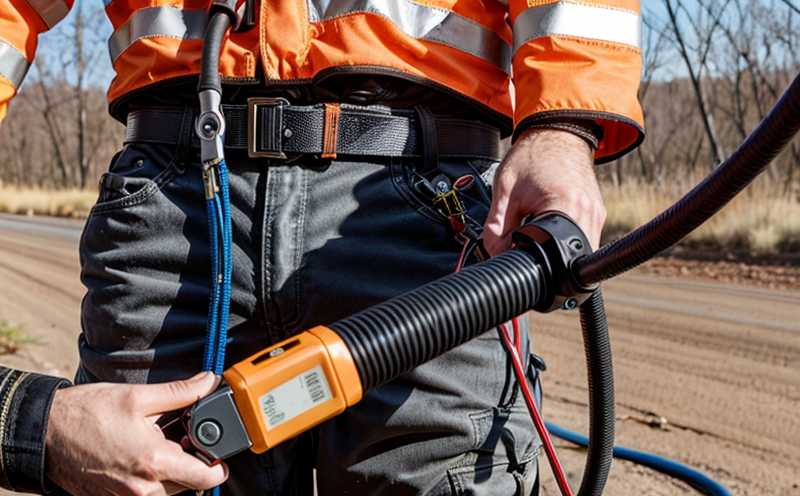Self-retracting lifeline inspection
The self-retracting lifeline (SRL) is a critical component in fall protection systems used across various industrial sectors, including construction, manufacturing, and logistics. It ensures the safety of workers by providing a secure connection between them and a fixed point or anchor. The primary function of an SRL is to prevent falls by reeling in excess length when tension is applied, thus reducing the risk of injury.
Inspecting these lifelines regularly is essential for maintaining their integrity and ensuring compliance with safety regulations such as OSHA (Occupational Safety and Health Administration) standards. This inspection includes checks for wear, tear, corrosion, damage from environmental factors like chemicals or extreme temperatures, and signs of fatigue that could compromise the strength and reliability of the lifeline.
The inspection process typically involves visual examination followed by more rigorous tests depending on the findings during initial inspections. These additional tests might include tensile strength testing, elongation analysis, and impact resistance evaluations to ensure that the SRL can perform its intended function under various stress conditions. Regular inspections are not just a formality; they play a crucial role in preventing accidents and ensuring occupational safety.
Given the importance of self-retracting lifelines in industrial environments, it is imperative that any inspection conducted adheres to recognized standards such as ANSI Z359.10 for fall protection systems and components. Compliance with these guidelines ensures that inspections are thorough and consistent across different facilities, contributing significantly to overall safety protocols.
For industries where worker safety is paramount, investing in robust inspection practices can lead to significant reductions in workplace injuries and fatalities associated with falls from heights. By implementing a proactive approach towards maintaining fall protection equipment like SRLs through regular inspections, organizations demonstrate their commitment to employee health and well-being while also fulfilling legal obligations.
| Inspection Criteria | Description |
|---|---|
| Tensile Strength Testing | Measures the maximum force required to break a lifeline under standard conditions. |
| Elongation Analysis | Determines how much the lifeline stretches before breaking, indicating potential for over-stretching during use. |
| Impact Resistance Evaluations | Assesses the ability of a lifeline to withstand impacts from falling loads without failing. |
| Environmental Factors | Risk Impact |
|---|---|
| Cold temperatures | Potential for reduced flexibility and increased brittleness, leading to higher breakage risks. |
| Exposure to chemicals | Risk of degradation or corrosion affecting the structural integrity of the lifeline. |
Why It Matters
The significance of inspecting self-retracting lifelines cannot be overstated, especially in high-risk environments where the consequences of failure could be catastrophic. Proper inspection helps identify potential issues early on before they escalate into full-blown failures that might result in severe injuries or even fatalities.
- Reduces the risk of falls from heights
- Promotes adherence to safety regulations and standards
- Safeguards workers against accidents and enhances overall occupational health
- Maintains compliance with industry best practices for fall protection systems
By prioritizing regular inspections, organizations demonstrate their commitment to creating a safe working environment. This proactive measure not only protects employees but also contributes positively towards reducing insurance premiums and operational costs associated with accidents.
Scope and Methodology
The scope of our self-retracting lifeline inspection service includes a comprehensive assessment of the lifelines used in fall protection systems within your organization. Our approach ensures that all critical aspects are covered, providing you with peace of mind regarding the safety of these essential pieces of equipment.
- Initial visual examination to identify any visible signs of damage or wear
- Tensile strength testing using calibrated equipment according to ANSI Z359.10 standards
- Elongation analysis to measure the amount of stretch before failure occurs
- Impact resistance evaluations to assess how well the lifeline withstands impacts from falling loads





